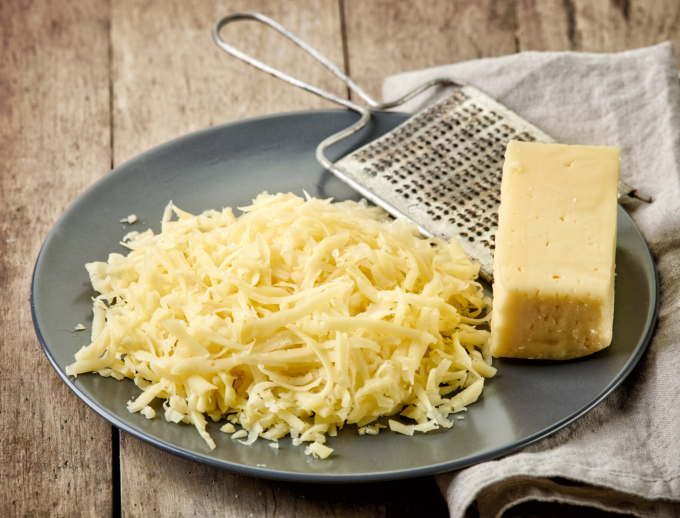 Potassium sorbate is a chemical compound that sees a great level of use in the food industry. Due to its potent, anti-microbial abilities, potassium sorbate is a popular preservative used to prevent mold or fungal growth in cheese, meat, baked goods, syrups, dietary supplements, and many more products. It is capable of inhibiting the fermentation process and is popular as a wine stabilizer as well.
Potassium sorbate is a chemical compound that sees a great level of use in the food industry. Due to its potent, anti-microbial abilities, potassium sorbate is a popular preservative used to prevent mold or fungal growth in cheese, meat, baked goods, syrups, dietary supplements, and many more products. It is capable of inhibiting the fermentation process and is popular as a wine stabilizer as well.
While a useful additive, there is some concern about potassium sorbate’s effects on the human body. To get a better understanding of its potential risks, it helps to look at what the available science has to say on the matter, as well as how potassium sorbate is regarded by those who regulate it.
History of Potassium Sorbate
Potassium sorbate is the salt that forms when sorbic acid and potassium mix. Sorbic acid is derived from the oil of unripe rowan berries or mountain ash berries. It has been possible to chemically synthesize potassium sorbate since the early 1900s, but the substance didn’t enter use as a food preservative until the 1940s. Since then, potassium sorbate has been heavily tested for safety and effectiveness.
The U.S. Food and Drug Administration has considered potassium sorbate to be Generally Recognized as Safe (GRAS) since 1975, a status it enjoys worldwide.
Potassium Sorbate Toxicity
In foods, potassium sorbate typically makes up around 0.2% to 0.3% of the food’s contents. On a per-serving scale, this works out to around 25 milligrams to 100 milligrams per 100 grams. The recommended safe amount is 25 milligrams per kilogram of body weight. Depending on size, this works out to around 875-1,750 milligrams per day being an upper safe limit for an adult. In the event that you consume upwards of seventeen times the suggested limit, you may develop nausea, muscle weakness, or diarrhea from the potassium overload.
Potassium sorbate in its pure form is also a skin and eye irritant and causes contact dermatitis (red, itchy rash) in concentrations as low as 0.5%. The amount present in most products is not enough to make this an issue under normal conditions. However, those with potassium allergies may experience dermatitis if they use cosmetics containing potassium sorbate. Other allergy symptoms such as a runny nose or nasal congestion may develop as well.
Some migraine sufferers also cite potassium sorbate as one of their triggers.
What Studies Say About Potassium Sorbate
Potassium sorbate has a long-standing health and safety record. It is considered non-toxic and does not accumulate within the body. This is a consensus shown by most of the available scientific literature on the matter, including three studies that show it to be non-carcinogenic. There are, however, two studies that have found possible areas of concern.
A 2010 study found that potassium sorbate had genotoxic properties—it damaged DNA when administered in large doses to certain white blood cells. Several chromosomal abnormalities were observed, but no details exist on how severe the damage was or if it was reparable. Additionally, this was an in vitro study, meaning that it was carried out on a cell outside a body’s environment. So far, no research exists that shows genotoxic effects in humans.
Similarly, a 2002 study found that potassium sorbate could, under certain conditions, create mutagenic compounds. If potassium sorbate, ascorbic acid (vitamin C), and iron salts were mixed together in food, they could react and create certain mutagenic compounds as byproducts. The likelihood of this occurring, as the study noted, was low, and the severity of potential damage to humans was not elaborated on.
How to Avoid Potassium Sorbate
If you are prone to migraines, allergies, or have high potassium levels already, it may be in your best interest to reduce your intake of potassium sorbate. This is, however, easier said than done. Due to its usefulness as a preservative, potassium sorbate is found in most processed or packaged foods, including meats, fruits, or vegetables. The most guaranteed way to avoid potassium sorbate is to eat organic foods as much as possible or foods that do not employ preservatives. If you do buy packaged or processed foods, pay attention to the ingredients list to see if it contains potassium sorbate.
Sources for Today’s Article:
Billings-Smith, L., “What Is Potassium Sorbate?” Livestrong.com, last updated April 23, 2015; http://www.livestrong.com/article/31559-potassium-sorbate/, last accessed October 7, 2015.
Carocho, M. et al., “Adding Molecules to Food, Pros and Cons: A Review on Synthetic and Natural Food Additives,” Comprehensive Reviews in Food Science and Food Safety 2014; 13(4): 377-399.
Hendy, R.J., “Long-term Toxicity Studies of Sorbic Acid in Mice,” Food and Cosmetics Toxicology 1976; 14(5): 381-386.
Kitano, K., et al., “Mutagenicity and DNA-damaging Activity Caused by Decomposed Products of Potassium Sorbate Reacting with Ascorbic Acid in the Presence of Fe Salt,” Food and Chemical Toxicology 2002; 40(11): 1589-1594.
Mamur, S., et al., “Does Potassium Sorbate Induce Genotoxic or Mutagenic Effects in Lymphocytes?” Toxicology in Vitro 2010; 24(3): 790-794.
Mason, P.L., et al., “Long-term Toxicity of Parasorbic Acid in Rats,” Food and Cosmetics Toxicology 1976; 14(5): 387-394.
“Natural Preservatives: Potassium Sorbate,” Innovateus web site; http://www.innovateus.net/food/natural-preservatives-potassium-sorbate, last accessed October 7, 2015.
“Select Committee on GRAS Substances (SCOGS) Opinion: Potassium Sorbate,” U.S. Food and Drug Administration web site; http://www.fda.gov/Food/IngredientsPackagingLabeling/GRAS/SCOGS/ucm261027.htm, last accessed October 7, 2015.
